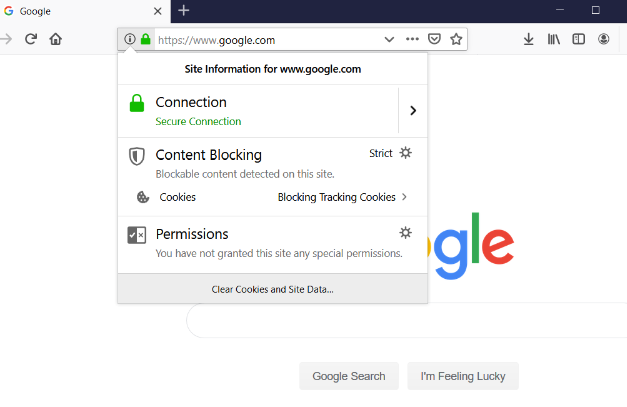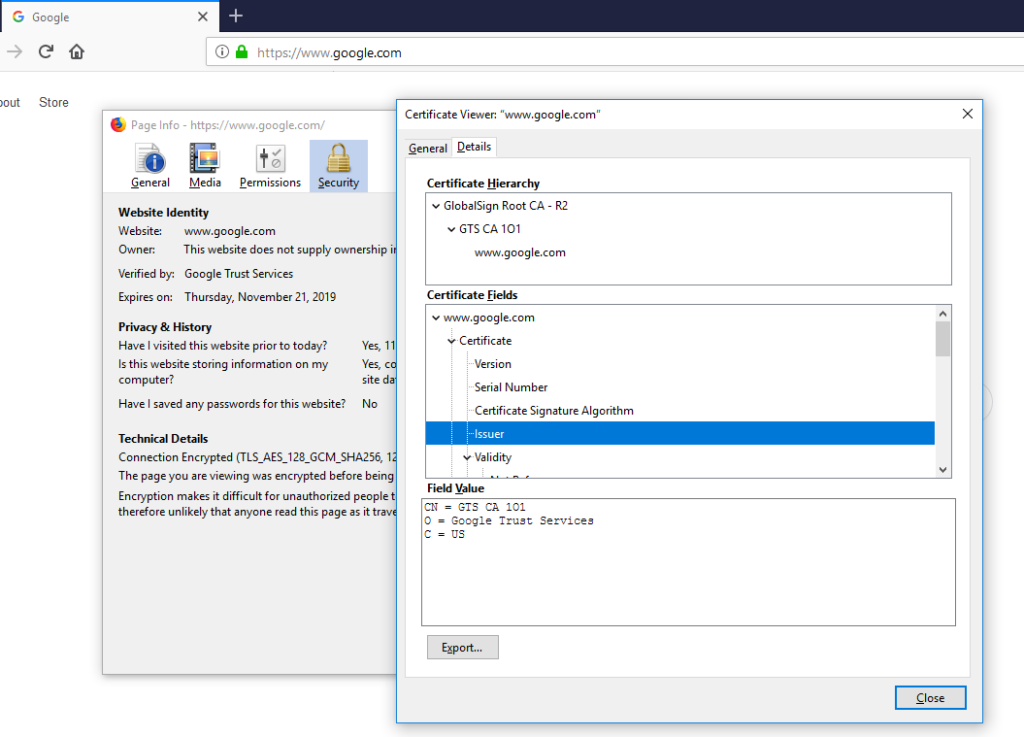How To Find Out If A Website Is Fake
The advent of the internet, just like technology, has eased the way we pb our lives. However, it has also made us susceptible to the dangers of the digital world. Now, more than than ever, not only can nosotros buy our groceries online, but we too run the risk of falling prey to a web of intricately woven scams and lies — all from the condolement of our couches. This is why every one of us needs to know how to tell if a website is legit.
Co-ordinate to the Better Business Bureau (BBB) Scam Tracker, at that place were 48,362 scams in 2018 in the U.South. alone, and 23,439 scams accept already been reported in 2019. With the numbers ascent every year, and scammers finding ingenious new ways to commit cybercrimes, information technology's imperative to learn to recognize these forms of attacks.
How to Tell If a Website Is Legit
Given the nature of our digital existence, nosotros could, at any moment, exist in contact with a cybercriminal or autumn victim to a phishing assault and exist none the wiser virtually it. It's therefore understandable if yous feel the paranoia grip you lot right before yous visit a website your friend told you well-nigh or click on the advertisement flashing in some corner of your screen. A expert dominion of thumb is to pay attention, apply good judgment when browsing, and look out for signs that can aid yous estimate the credibility of the website.
Here are ten ways to notice out if a website is real or a fake:
1. Verify the Website's Trust Seal

A trust seal attempts to communicate to you as an cease user that the website they're on is safe, and that the business concern itself views security as a priority. It is a stamp granted past a security partner (such as a certificate authority, or CA) that'southward indicative of the legitimacy of the website. If a trust seal is legitimate, clicking on it volition take you to a folio that verifies the authenticity of that seal.
2. Does It Have the Padlock with HTTPS? Did You View the Document Details?
HTTPS merely means that the communication channel betwixt you and the server is encrypted and secure (i.e., an attacker listening in on the network will become garbled encrypted data that won't make sense). HTTPS does not assure that the server you are communicating with volition non steal your data. If the server is itself malicious, the Due south in "HTTPS" volition do very petty to ensure security.
Await at it this way: While it's a no brainer that if your browser flags a website every bit "not secure," no sensitive data should exist entered on the page. Simply fifty-fifty if the site uses HTTPS, it doesn't automatically guarantee prophylactic. This is why SSL/TLS certificates offer different validation levels.

To view the digital certificate issued to the website, click on the padlock in the spider web address bar and select Certificate if using Google'southward Chrome browser. For Firefox, click on the padlock and and then on the arrow to show connection details. Click on more information and then view certificate.

3. Check the Contact Page
Our third recommendation for how to tell if a website is legit is to verify whether the website has a concrete address. Does the company have a phone number listed and an email ID? Endeavour sending an email to the ID provided on the contact page and bank check if information technology gets delivered. Verify that the electronic mail is non a generic ane (such equally xyz@gmail.com) only 1 that comes with the visitor make (such as name@companydomain.com).
4. Cheque Whether the Company Has a Social Media Presence
Most legitimate companies have some level of a social media presence. Fake websites sometimes accept the icons for Twitter or Facebook, but the graphics don't really link to a real account. Read company reviews on such platforms and see if you can find existent employees of the company on LinkedIn.
5. Don't Click on Links Inside the Trunk of an Email
Unless you requested a countersign reset link, in that location's almost never a compelling reason to click on links in your e-mail.
If PayPal was writing to you, they would know your proper name and apply proper grammer. They're non going to refer to you as "member" or "client." Furthermore, not in a million years would they threaten to suspend your account forever with a poorly written email, utilize urgent or threatening language, or ask y'all to provide personal or account information.
Past just hovering the mouse over the login button, you should be able to see the actual link where yous would get redirected. Call up that once you hitting login, it might take you to a site that looks eerily similar to the original PayPal website. Only the moment you enter your credentials, there'south a very good chance that your account will go compromised or your account details will be sold.
6. Look for Spelling or Grammatical Mistakes. Is There a Fake Sense of Urgency?
These are all telltale signs of a phishing assault. Most legitimate companies make an effort to ensure minimum quality standards in all communication that leaves their desks. Apart from rare genuine typos, information technology'due south highly improbable that you will always receive a poorly worded email from an Apple or a Microsoft. All communications from legitimate companies will have an appropriate tone and volition never sound menacing or threatening, even if you don't follow through with their phone call to action.
If the website looks like information technology was designed by some seven-yr-old who is learning to draw, or if information technology has glaring grammer issues, chances are that information technology'southward a malicious website and you should avert it at all costs.
7. Utilize the Google Safe Browsing Transparency Report
When in dubiousness well-nigh a website's safety, head over to the Google Safe Browsing Transparency Report. This tool allows you to enter a URL to check whether it hosts any malware or if the site is safe for browsing.
eight. Check for a Website Privacy Policy
Most countries and industries take information privacy laws and regulations that make it mandatory for a website to let their users know how information is nerveless, used, protected, and stored. This procedure is usually achieved by writing a privacy policy document and getting users to read them and agree to the terms and atmospheric condition. By at present, well-nigh of us accept skimmed through enough privacy policies to know what a decent one looks similar in contrast to one that pretends to be an accurate document.
Apart from the privacy policy, if you're on an e-commerce platform, be sure to read their shipping and return policies. This is always a swell method of telling website a website is legit or fake. If the website lacks one, or if it looks unpolished at best, rethink your determination to brand any purchase from such a dubious site.
ix. Pay Close Attention to the URL
Check that the website isn't attempting a homograph phishing attack. Browsers tin can be tricked into displaying fake domain names equally trusted legitimate sites such every bit a domain registered as xn--pple-43d.com is displayed every bit apple tree.com.

URLs can be manipulated using alphabets that appear like from other foreign languages such every bit the Cyrillic alphabet. The URL tin can be designed to expect a certain style using subdomains, only if inspected closely, the name of the actual domain is appears right before the TLD. A uncomplicated way to identify whether a URL is a homograph phishing attack is to copy and paste the URL in another tab. When pasted on the address bar the URL appears as "https://www.xn--80ak6aa92e.com/" earlier you lot hit enter and load the site.

10. Know the Obvious Signs of Website Malware
Web defacement attacks, suspicious pop-ups, and advertisements that try to entice you to click on them typically are indicative of malicious websites egging you on to download and execute some malware on your organization. Be wary of websites that redirect you lot to other sites with promotional content or to a legitimate looking folio asking you to enter sensitive information. E'er exercise caution when clicking on any ads!
Security Add together-Ons and Tools
In addition to the steps we outlined above for how to tell if a website is legit, there are tools and add together-ons that can help y'all stay safe online as well.
Services similar Norton Safe Web and Virus Full analyze URLs and tell u.s.a. if the site we are interested in visiting is safe or malicious. Apart from the same precautionary steps, a few extensions and tools can also come in handy to keep us from visiting fake websites.
- Netcraft Extension: This tool allows you to do a quick lookup of the sites you desire to visit and provides protection against phishing.
- Disconnect: This tracker blocker lets you see everything that tracks you on a website and allows you to disable them.
- Webroot Filtering Extension: This tool keeps you prophylactic by blocking and filtering out unsafe websites.
- Privacy Cleaner: This application runs in the background and alerts you lot if a folio or an app tries to access your files and information.
Nosotros promise these recommendations for how to tell if a website is legit will come up in handy.
Source: https://sectigostore.com/blog/how-to-tell-if-a-website-is-legit-in-10-easy-steps/
Posted by: haysaidd1989.blogspot.com


0 Response to "How To Find Out If A Website Is Fake"
Post a Comment